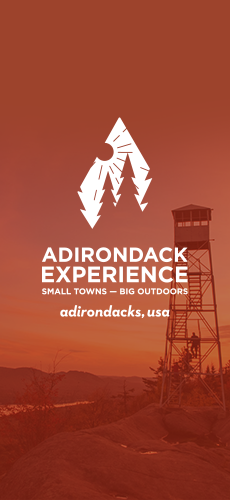G Lake is set back in a quiet corner of the Ferris Lake Wild Forest. Its name is derived from the shape of the body of water, which, unironically, forms something that resembles a letter “G.” It doesn’t take a huge effort to reach this alphabetical treasure. A good family hike, and very easy to portage for a bit of paddling.
Key takeaways
- Distance: 0.8 miles round trip
- Elevation gain: 75 feet
Hiking to G Lake
This is more of a walk than a hike at only 0.4 miles one way. There are designated primitive campsites along the road, at the parking, and at the lake, persuading you to make an overnight of your trip or even just a picnic for a few hours. From the summer parking near a barrier, it’s less than half a mile to the best water access and campsite. When you arrive, you’ll notice that this spot is near a clearing. This is the site of a former camp which was privately owned. If you make it out on the water, you’ll notice the remains of a dam at the outlet of the lake. Because the dam is no longer functional, the lake is not very deep.
G Lake in the winter
The access road to G Lake is closed in the winter, and snowshoers/crosscountry skiers will need to park at the beginning of the road. The round trip distance in the winter is 5 miles, with 670 feet of elevation gain. If you have experience, this would be a good intermediate crosscountry ski, with a big hill towards the end. Make sure you are prepared for all winter conditions, and take care with recreating around frozen bodies of water.
Experience more trails in Hamilton County
Looking to find some more trails to hike in Hamilton County? With hundreds of miles of trails, we can help you find more amazing hikes in the big outdoors.
Birding
This trail starts with a scenic drive through a hardwood forest offering many bird-watching opportunities. After the short drive, the hike into G Lake continues the birding experience, passing through a spectacular hardwood forest.
As you approach the lake you’ll see a peninsula and scenic views across the water to the north. Nesting loons have been spotted on the opposite side of the pond, so approach carefully if in nesting season. The habitats are diverse, so you may see Golden-crowned Kinglets, Vireos, nesting loons, White-throated Sparrows, Ovenbirds, Winter Wrens, and a variety of woodland Warblers.
How to get there
To reach G Lake in summer, drive down NY Route 8 to a narrow gravel road found ~2.5 miles west of the intersection with Old Piseco Road. Turn here and continue to the parking space. The access road is all on state land and open to the public, allowing visitors to drive to within 0.4 miles of the lake.






